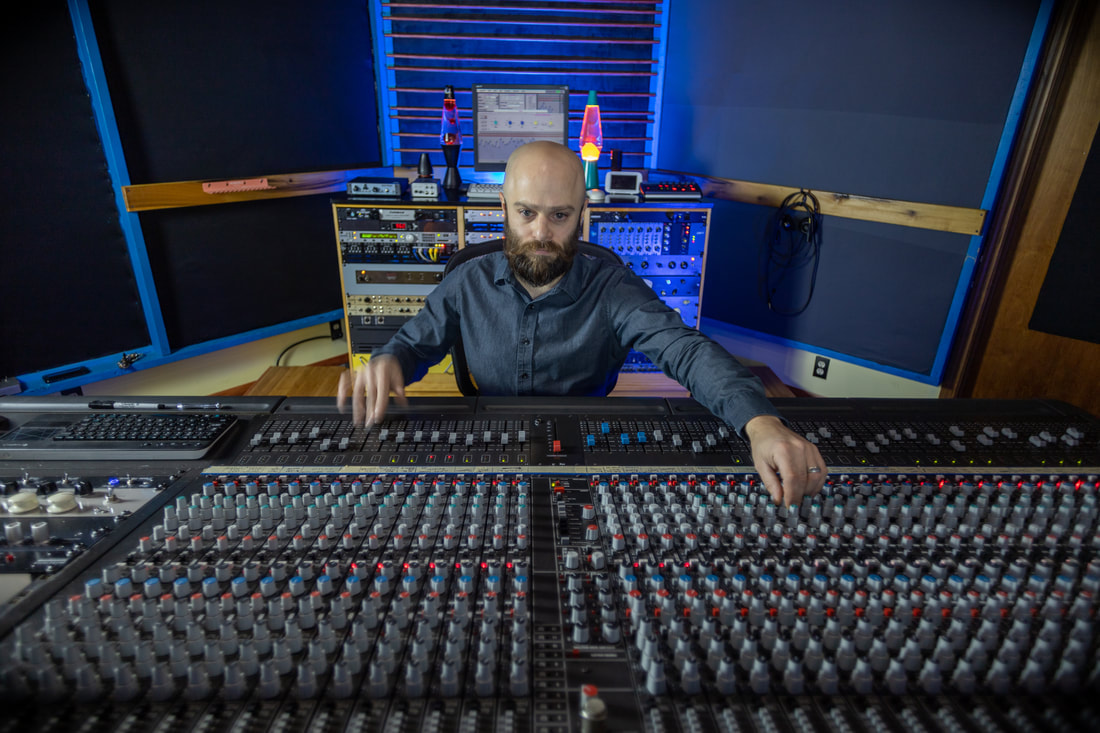|
The single most important thing about recording (other than the music and the musicians) is the space in which the recording takes place. A properly tuned room can create a great recording even if the recording equipment is sub par. It doesn't work the other way around though. Great gear can't make a great recording if the room has terrible standing waves and boomy low frequencies, and/or a plethora of other bad things like too much of a bad room reverb for example. In my opinion, more money should probably be invested into the sonic tuning of recording spaces (and mixing spaces) than on the gear used to record in those spaces if the goals are better sounding finished products and faster mixing. But, don't guess at it! Believe me - I made that mistake more than once. If you're curious about the science behind designing acoustic spaces, Me too! Read on to learn a bit about the science we're using at LBA.
To cut to the chase, Room EQ Wizard, AKA REW, has been the primary tool to determine what is wrong with the rooms in the studio. To be honest, I already knew what was wrong with certain rooms just from experience. If you're always EQ'ing the same frequencies out from multiple things recorded in the same location over time, it's probably an issue with the space you're recording in. Not everyone is aware of this, but EQ is not the best solution. That's right, using an equalizer in mixing or recording to fix a bad room node or to tame an unwanted high frequency reflection is not the best solution. Okay, OK, when you EQ a sound, you're not intentionally EQ'ing out the room sound, but whether or not you're aware, chances are it's a big part of your EQ work if you don't have tuned rooms. So far, Paul and I have only tuned the Control Room here at LBA. The Control Room is the most important room, so that one was dealt with first. We're currently working on the Isolation Booth/Iso Booth, AKA "Vocal Booth". The control room was actually much easier and less expensive because all we had to do was apply an actual and permanent analog EQ just in front of the audio signal going to the speakers. REW was used to measure the frequency response of the room in addition to the decay time of every frequency. EQ can fix the frequency response, but the decay time will require acoustic materials if you don't already have them in place. The control room at LBA has been acoustically tuned before, so this was just a fine tuning. The mix position has a very flat frequency response and decay time across the audio spectrum, making it an excellent place to make critical listening decisions. The Iso Booth is a totally different story. In my opinion, the Iso Booth has always been the worse sounding room at LBA. Really, that should be no surprise to any pro because we understand smaller rooms inherently sound worse than larger rooms. A closet is probably the absolute worse case scenario for recording. This Iso Booth is about the size of bathroom with a 10' ceiling (and very irregularly shaped) , so it's not that bad. Earlier this year I made some acoustic improvements to the Iso booth (floating floor), but it wasn't as significant as what's going on right now. After running REW, we were able to see what I was hearing for all these years. We did some experiments, referencing new REW measurements each time, in order to zero in on what materials used in what locations would give the results we were looking for. If you've been in our Iso Booth before, you've seen the Auralex studio foam on the walls and you might even recall the sound of that room. We ripped out almost all the Auralex from that room and placed most of what was removed onto a single wall. The tightest corner in the room (no right angled walls) is where the bass buildup is greatest. Bass frequencies always build up in corners, so this is where you place bass traps. It's not a sub-bass build up, which makes this easier to deal with. The node is at about +12dB @ 110Hz if I remember correctly. My short-term memory isn't the best, but it's close enough for this post. There's also some uncool sounding high frequency standing waves in a couple locations, and some poopy sounding high frequency reflections. Over the past 4 days I purchased about $1000 worth of acoustic materials to tune the Iso Booth. I don't expect this to turn out to be as good or better than the control room, but I will be very happy if it turns out to sound at least 30% better than it used to. This room has been used for countless recordings of various sources over the years. It's sound has improved a lot during that span and recently wasn't very bad at all. I'm just pushing the boundaries of what can be done because I'm fully aware of the fact that the room sound is one of the most important aspects of any recording with microphones and I want the best. After this room is complete, we're going for the Hall, which is where drums and horns often get recorded at LBA. That room has never been tuned, but the reverb is so awesome it makes up for a lot. I find myself needing to apply a ton of EQ on things recorded in that space, so that one is definitely up next.
0 Comments
Your comment will be posted after it is approved.
Leave a Reply. |
Details
AuthorMike Congilosi II, Producer and founder of Lightning Boy Audio shares occasional snippets of whats going on in the studio. Archives
March 2025
Categories |


 RSS Feed
RSS Feed